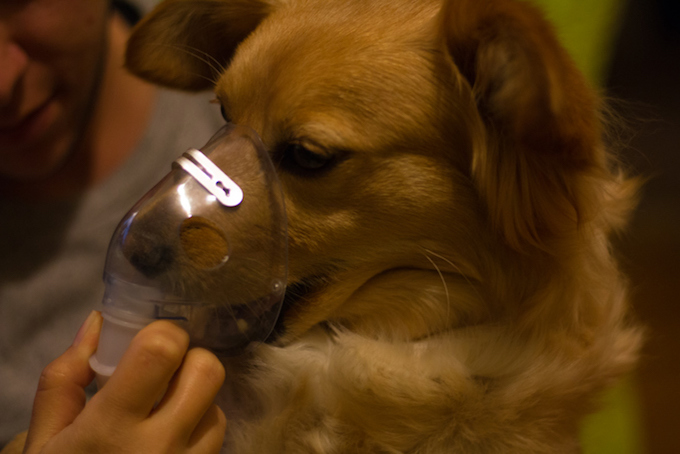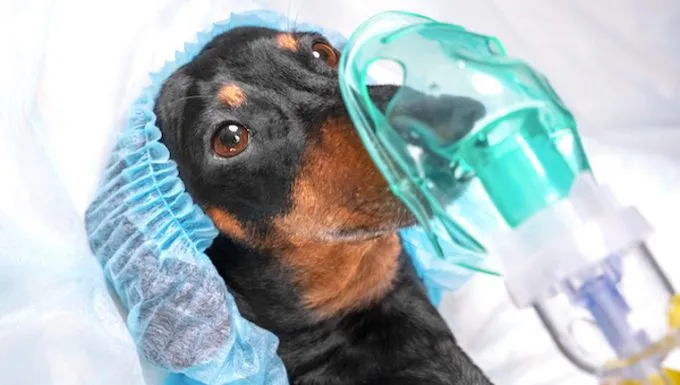Low blood oxygen in dogs happens when a dog’s blood does not contain enough oxygen. The condition produces symptoms that include breathing difficulties.
The condition is considered to be very serious and needs to be treated immediately. Unfortunately, if not treated quickly the condition can become life threatening.
Technically, the condition is also known as hypoxemia in dogs.
If you see the signs of the condition in your dog, then get to a veterinarian for a proper diagnosis and treatment.
Here’s what you should know about the symptoms, causes, and treatments for the condition.
Symptoms of Low Blood Oxygen in Dogs
The condition produces a range of symptoms. For instance, some of the most common symptoms include:
- Breathing difficulties
- Coughing
- Breathing with an open mouth
- Shortness of breath
- High heart rate
- Avoiding exercise
- Pain
- Cyanosis (skin turning blue)
- Loss of appetite
- Collapsing
- Fainting
Causes of Low Blood Oxygen in Dogs

The cause of the condition is not having enough oxygen in the blood. For example, some of the common causes of this include:
- Pneumonia
- Lung problems
- Heart disease
- Anemia (severe)
- Anesthesia
- Pneumonia
- Pulmonary fibrosis
- Injury
Treatments for Low Blood Oxygen in Dogs
Firstly, your vet will ask about your dog’s symptoms. Secondly, your vet will ask about any recent circumstances that could have caused the condition, such as a head injury.
Thirdly, your vet will check your dog’s body temperature. Next, blood tests will be taken. Also, your dog’s blood gas will be analyzed.
Generally, treatment targets the underlying cause of the condition. Usually, oxygen therapy will be used. Additionally, intravenous medicine is often administered. Also, any excess fluid in the lungs will be drained.
While recovering at home it is important to provide your dog with a quiet and calm environment. Also, pay attention to your dog’s breathing and tell your vet about any problems or issues.
Have you ever cared for a dog who suffered from this condition? How did your vet help your dog recover? Let us know in the comments section below.









